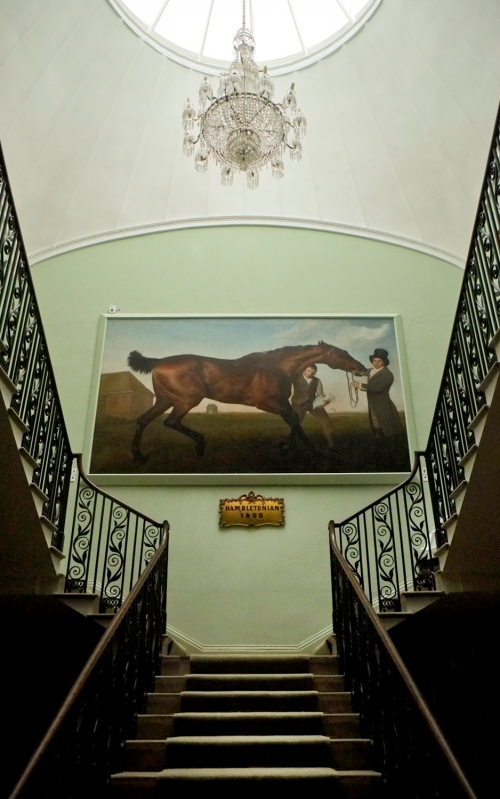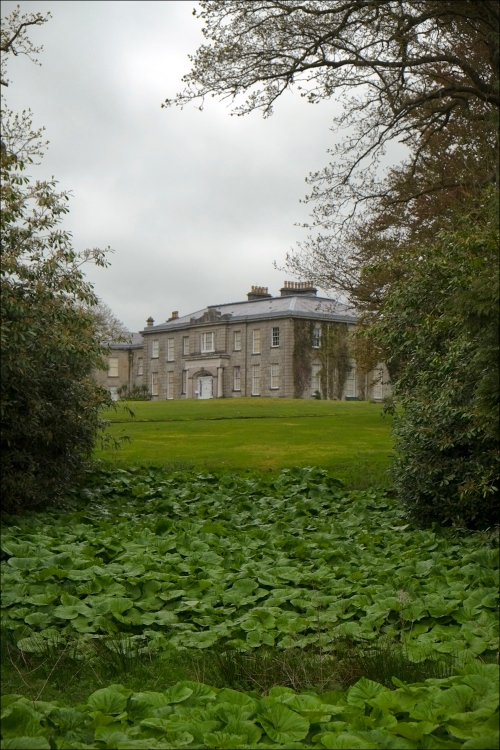
Beningbrough is one of the most remarkable houses in all of England. The grand interiors, amazing woodwork and exquisite gardens are second to none and yet very little is known about Beningbrough’s past.
Ralph Bourchier inherited the estate in 1556, but the mansion we see today was built by John Bourchier (1685 – 1736) and his wife, the wealthy heiress, Mary Bellwood (1683–1746).
Sir John Bourchier spent two years in Italy during his Grand Tour of Europe. He was so impressed by his time there that several years after his return John built the current Beningbrough Hall in an Italianate baroque architectural style. It was his marriage to Mary Bellwood that provided funds to do so. The Hall was completed in 1716 and would become the family home for 150 years.







The Great Staircase
Completed in 1716, this truly remarkable staircase is an exquisite example of early 18th century craftsmanship. Hand built by York wood craver William Thornton, all three floors of inlaid wood treads are suspended on cantilevered iron rods giving the whole staircase the appearance of floating in air with no visible means of support. All the balustrades are hand craved oak designed to look like wrought iron.


During the second world war RAF servicemen damaged some of the balustrades. Lady Chesterfield hired York based master craftsman Derek Wall to do the repairs which are remarkably indistinguishable from the originals.



The gardens that surround the estate are being reworked by award winning landscape designer Andy Sturgeon.








Sir John Bourchier – The Threat of Confiscation

Sir John Bourchier’s father suffered from mental illness and was declared legally incompetent in 1598. His upbringing became the responsibility of his strictly Puritan uncle. This greatly influenced his young nephew’s political and religious beliefs. He never believed that God spoke directly through the Monarch. When King Charles I dissolved Parliament and sought to raise money through Forced Loans in 1627, Sir John refused to go along with the scheme. The English Civil War broke out in 1642 and John was arrested and imprisoned in York. After his release he was elected to Parliament and sat as a judge at King Charles’ trial. Sir John was one of 59 men to put his signature and seal on the King’s death warrant.

After the Monarchy was restored in 1660 all the signers were ruthlessly pursued. The elderly Bourchier was captured but was too ill to be tried for regicide. In the end he remained unrepentant saying, ‘I tell you, it was a just act; God and all good men will own it.’ Through political ties, his son, Barrington, somehow rescued the property from confiscation by King Charles II and managed to keep Beningbrough in the family.
The Honorable Enid Edith Wilson, Countess of Chesterfield

In 1900, at the age of 21, Enid married Edwin Scudamore-Stanhope, a man twice her age, and became the Countess of Chesterfield. Her father bought Beningbrough Hall as a wedding gift for the couple. In the early 1920s Lady Chesterfield started to raise thoroughbred racehorses. Her husband died in 1933 and she stayed on at the hall until her death in 1957. The couple had no children and Beningbrough was then acquired by the National Trust in lieu of death duties.
The Second World War
When WWII broke out and the house was requisitioned by the RAF. Clifford Hill, one of the soldiers living on the estate, recalls an encounter with Lady Chesterfield. She was very irate that he and his companions were mistreating her gardens. She is reported to have said to them, “Good luck boys, and keep off my vegetables”.
The Race To The Bar
The airmen risked their lives every night on bombing raids in enemy territory. All sorts of capers were dreamed up to relieve their stress. If you could run from the bar, the full length of the house, up the stairs, along the top floor and then back down to the bar in one minute, you won a free pint. It was a mad rush. Running, push bikes, and on at least one occasion, a motorbike was used to try and win the pint.
































































